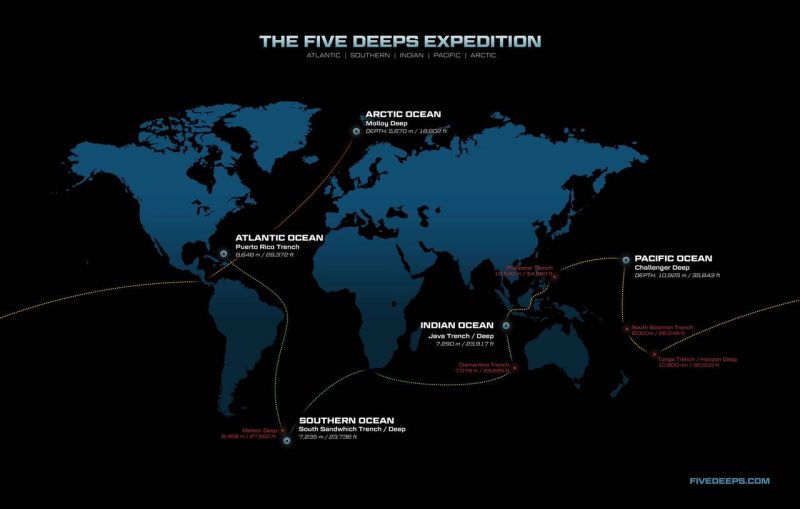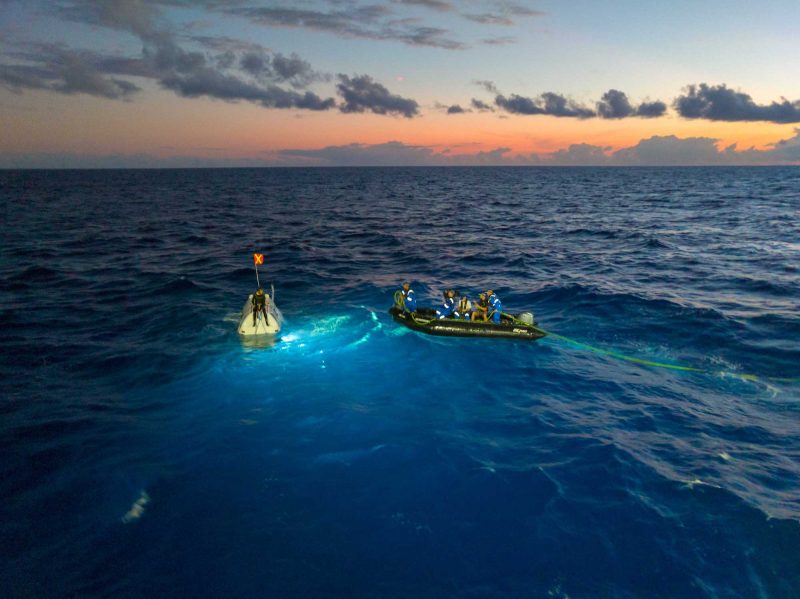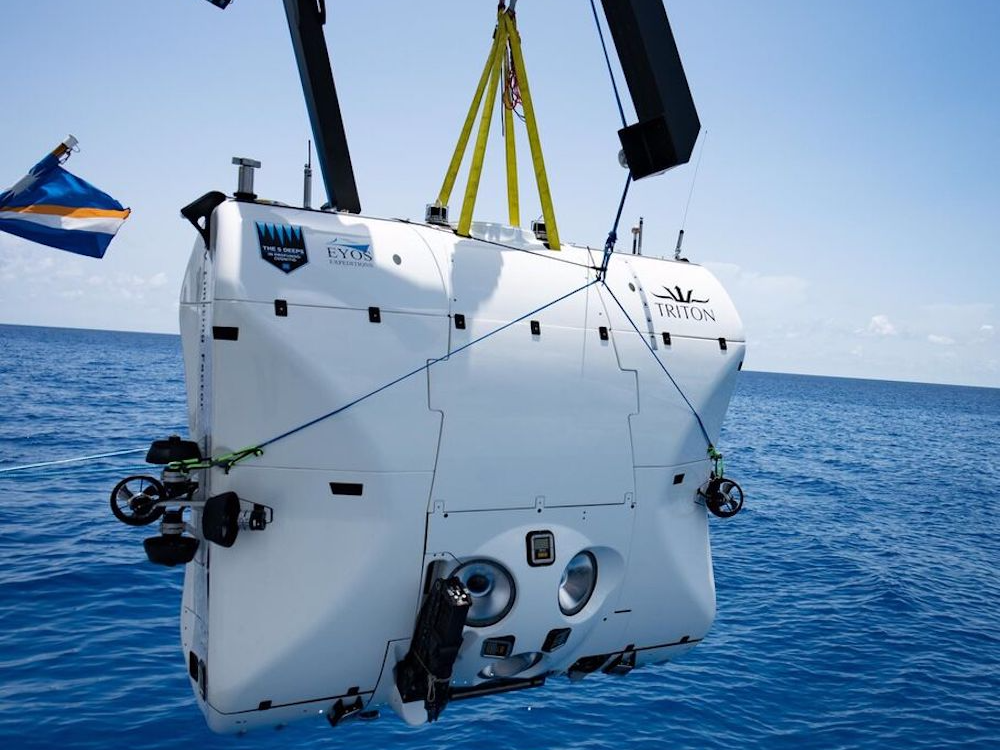- Private-equity-firm manager and explorer Victor Vescovo just became the first person to reach the deepest point in the Atlantic Ocean.
- Vescovo solo-piloted a $48 million Triton Submarine to the bottom of the Puerto Rico Trench, 27,480 feet below the surface (8,376 meters).
- This was the first stop on a five-part exploration of the bottom of the world’s oceans. Next up is the South Sandwich Trench.
It’s a record: American businessman and explorer Victor Vescovo just became the first person to reach the deepest part of the Atlantic Ocean.
On Wednesday, Vescovo traveled to the bottom of the Puerto Rico Trench – 27,480 feet below the surface (8,376 meters) – in a $48 million titanium Triton 36000 submarine.
“It felt great to get to the true bottom of the Atlantic Ocean for the first time in history,” Vescovo, a retired Navy reserve officer, said in a release. “And to prove the technical capabilities of this diving system, which we believe is now the deepest operational one in the world.”
The only other submarine that has explored depths below 22,966 feet (7,000 meters) and is still operational is the Chinese Jiaolong submarine. But Triton just proved it can go far deeper.
Other submersibles (which don't work anymore) have explored deeper depths before, notably in the Pacific Ocean, where Challenger Deep - nearly 7 miles down - is believed to be the lowest spot on the sea floor. Film director James Cameron went there in 2012, traveling roughly 35,761 feet (10,900 meters) below the surface, and explorers Jacques Piccard and Don Walsh were the first to descend to the spot in 1960.
But this is the farthest anyone has dived in the Atlantic.
The Triton submarine took three-and-a-half years to design and build. The vessel isn't made for speed and typically travels no quicker than about 3 1/2 mph.
Taking the vehicle to the bottom of the Puerto Rico Trench was the first stop on a five-ocean tour of the world's lowest watery depths. Vescovo hopes these dives might reveal new information about the shape of our oceans and the creatures that inhabit them. After all, we don't even know for certain that Challenger Deep really is the bottommost spot on the ocean floor.
Next up on Vescovo's journey is the South Sandwich Trench in the Southern Ocean. The underwater area he's headed to hasn't even been named yet, so Vescovo is looking forward to claiming naming rights there in February 2019.

In the Puerto Rico Trench, more than 5 miles below the surface, the pressure is immense: over 800 times what it is at sea level. So the Triton submarine has special features built in to help withstand that pressure.
"The acrylic moves a quarter of an inch deeper towards Victor as he gets down to those depths," Triton engineer John Ramsay told Business Insider earlier this year. "The whole thing is shifting and changing shape."
The vehicle is also equipped with biological sample boxes as well as a 3-D sonar system that's designed to be much better at mapping the ocean floor than satellites. The team hopes to unearth some sediment cores, too.
While Vescovo's record-breaking dives are solo efforts, he's traveling to the start points on a crewed naval ship called Pressure Drop.
Marine ecologist Alan Jamieson from Newcastle University is onboard as well, and said the deepest 45% of the ocean has been essentially ignored by explorers. The submarine even has a second seat on for Jamieson to travel with Vescovo on subsequent dives.
Here's what it looked like when the crew picked Vescovo up, after his successful trip to the bottom of the Atlantic:


